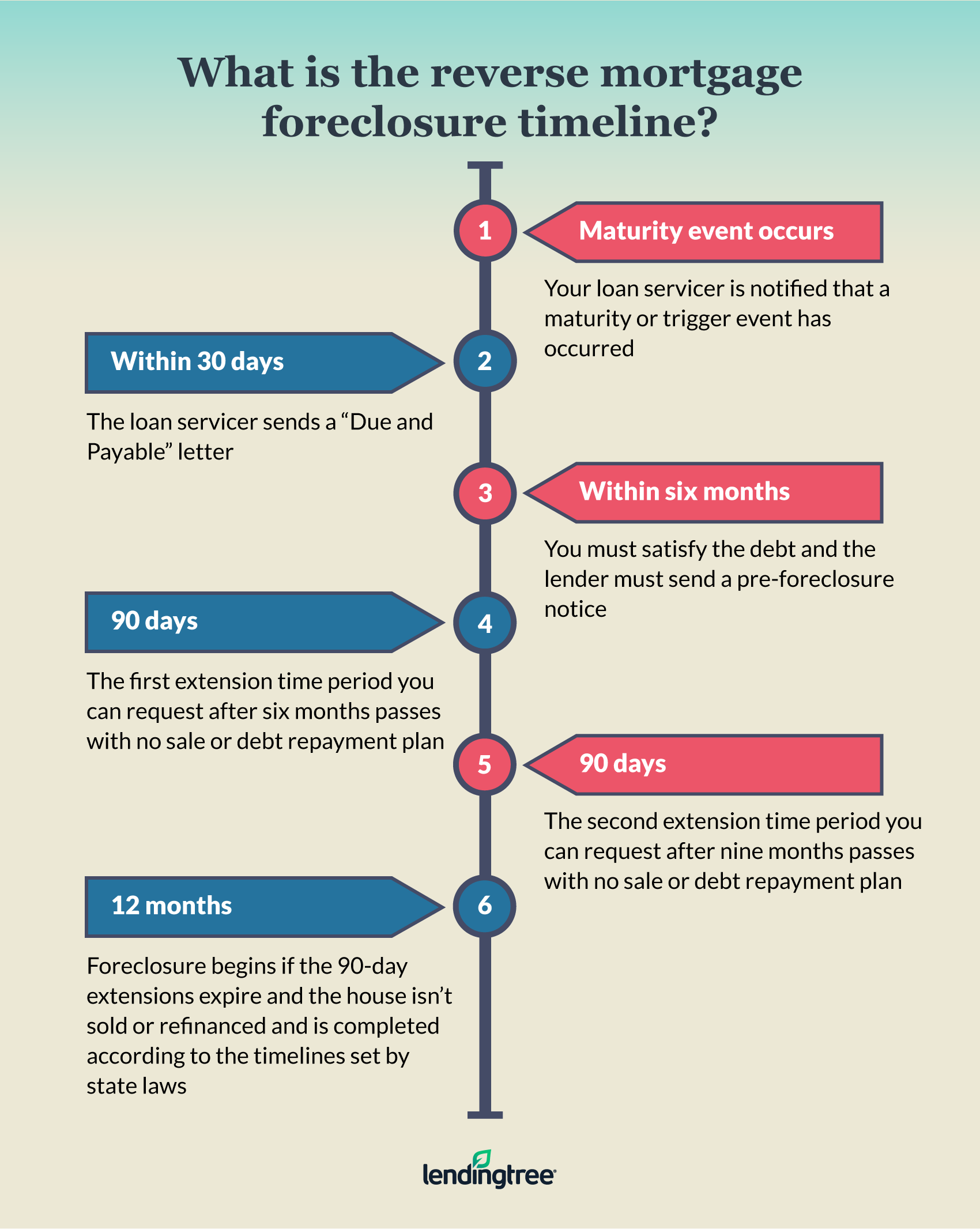Reverse Mortgage Foreclosure: What You Should Know
Many senior homeowners ages 62 and older consider getting a reverse mortgage to convert their home’s equity into cash without having to make a monthly mortgage payment. While there’s no threat of the lender foreclosing due to missed payments, there are other situations that could result in a reverse mortgage foreclosure.
What is a reverse mortgage foreclosure?
A reverse mortgage foreclosure is when a lender requires full repayment of a reverse mortgage loan balance due to a “triggering event,” such as the death of all of the homeowners. However, there are other common events that can lead to a reverse mortgage foreclosure.
Most borrowers choose a Home Equity Conversion Mortgage (HECM), which is insured by the Federal Housing Administration (FHA). Although private lenders offer proprietary reverse mortgage products, the reverse mortgage foreclosure process outlined here focuses on HECMs.
![]() Learn more about other FHA loans.
Learn more about other FHA loans.
What causes a reverse mortgage foreclosure?
With most mortgages, several months of missed mortgage payments typically kickstarts the foreclosure process. However, reverse mortgages don’t require monthly payments to the lender, and some homeowners don’t understand when a lender can require the repayment of the loan. With a reverse mortgage, there are several trigger or “maturity” events — as they are called in lending language — that could set the reverse mortgage foreclosure process in motion, including:
- All the owners die
- One owner dies and the surviving spouse was not on the reverse mortgage loan
- The property is sold or transferred
- The borrower doesn’t use the home as a primary residence
- The borrower doesn’t live in the home for longer than 12 months in a row
- The borrower doesn’t pay property taxes or homeowners insurance on time
- The borrower doesn’t maintain the home
How does a reverse mortgage foreclosure work?
- A triggering event occurs. The most common trigger event is when the loan servicer is notified that one or both of the homeowners have passed away. However, reverse mortgage lenders can also start a reverse mortgage foreclosure based on any of the maturity events listed in the previous section.
- Notice is given to the owners or heirs. The lender will send out a “Due and Payable” letter in the mail to the home within 30 days of the maturity event. At this stage, the surviving spouse or heirs have six months to sell the house or find a way to pay off the reverse mortgage balance. It is very important that the borrower or heirs respond; otherwise, the loan servicer can begin the full foreclosure process.
- Extensions may be requested. If the reverse mortgage debt isn’t repaid within six months, two three-month extensions can be requested with HUD approval. The surviving spouse or heirs must provide proof of ongoing efforts to sell or refinance the home to get extension approval.
- Foreclosure proceeds if the loan can’t be settled. If you or your heirs aren’t able to settle the reverse mortgage, the loan servicer can foreclose on the home. The timing of the foreclosure process varies by state. Contact a local foreclosure attorney if you need help understanding your rights.

Notify the loan servicer immediately after a borrower death
How to avoid reverse mortgage foreclosure
- Communicate with the loan servicer as often as possible. It’s important to stay in regular contact with the loan servicer, especially if you need to request extensions to work out a settlement plan.
- Request a repayment plan. Some loan servicers may offer a repayment plan if you qualify.
- Get help from a HUD counselor. A HUD counselor is trained to provide information about foreclosure prevention and may be able to give you helpful tips to avoid foreclosure.
- Refinance to a regular mortgage. You may be able to refinance to a regular, forward mortgage if you meet minimum mortgage requirements.
- Sell your home. A surviving owner or heir can sell the home for 95% of its appraised value without worrying about repaying any reverse mortgage balance above that amount.
- Repay your reverse mortgage with cash. This may be an option for heirs that want to keep the property in the family if they have the cash resources to pay off the loan balance.
- Offer a deed-in-lieu of foreclosure. If no repayment is possible and the heirs don’t want to take responsibility for the sale of the home, the deed can be given back to the lender instead of going through foreclosure.
Eligible non-borrowing spouses may be able to stay in the home
If your spouse took out a reverse mortgage but didn’t include you on the title because you are under 62 years of age, you may still be able to stay in the home as an “eligible non-borrowing spouse” if you meet these five conditions:
- You make timely tax and insurance payments
- You maintain the property under the terms of the HECM
- You were legally married under eligible non-borrowing spouse guidelines
- You’ve lived the home as a primary residence while the HECM was in place
- You have the legal right to take title to the home within 90 days of the borrowing spouse’s death
What happens after a reverse mortgage foreclosure?
The FHA HECM program has built-in features to minimize the financial consequences of a reverse mortgage foreclosure, but the aftermath is similar to what happens with a regular foreclosure:
- You’re no longer responsible for the loan
- Your heirs are not held responsible for any loan balance that exceeds the home’s value
- The FHA mortgage insurance covers losses if the loan balance exceeds the home’s value
- The investor on your loan becomes the homeowner


